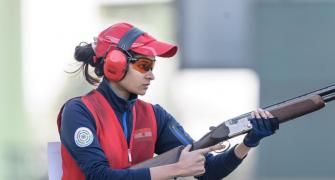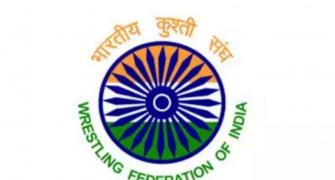You watch a cricket match and, at the end of it, your mind is filled with edited highlights -- a shot here, a wicket there, an outstanding bit of fielding, an umpiring error...
Those are what you depend on when, at the end of the day, you sit down to analyze the game -- or even argue about it, over a pint or three, with friends. But memory, I noticed during the six years of doing match reports, can be tricky -- while it is good at retaining the highlights, it is not equally reliable when capturing the smaller nuances.
Time and again, I'd do a match report -- and have readers writing in to point out that I had missed this, or the other, facet of the game. And on each of those occasions, I found myself wishing I had some means of reviewing the game before writing the analysis.
Videotaping it is not the answer -- not, that is, unless having watched 6 hours of play you want to then watch the replay for another six hours. What you really need is a way of being able to flash back to one precise point in the game, at the touch of a button -- a sequence of scoring shots, say; or the way a particular spell, by a particular bowler, evolved.
So now that I am no longer doing match reports, I find just the tool I need -- on Willow TV (See links, below this article).
What it is, is a scorecard I can manipulate at leisure. To review, say, all deliveries bowled by Andre Adams in the fourth one-day international to check consistency of length and line; or to replay a batsman's entire innings to see just how many times he came forward to length, or used the full face of the bat to play in the V as opposed to the more dangerous forcing shots square of the wicket...
Taken to its logical conclusion -- imagine, for instance, your basic scorecard married to manhattans, wagon wheels, pie charts, worm graphs and the various other tools of the scorer, each of them instantly linked to the corresponding section of the video so you can replay the game from any perspective you like, as many times as you wish -- this could be the Internet's answer to interactive television.
Interestingly, for me, it happens to be the handiwork of a bunch of Indian cricket fans -- well, who else?
As the persons involved tell it, first there was CodecX Technologies, a Silicon Valley outfit founded by Sameer Mehta and Ashok Jain to create new technologies in the video streaming space. Then came Willow -- an initiative of another Silicon Valley tech-head of 13 years standing by name Vijay Srinivasan, in tandem with CodecX, with the focus on streaming video in cricket.
The game plan is obvious --- to make cricket available ubiquitously across North America, to make the Web the preferred medium, and to apply technology to enhance the viewing experience.
As Sameer tells it, this is the story of the interactive scorecard: Like any other cricket nut based out of the US, in the absence of live video I've spent many an hour poring over scorecards. Cricket scorecards are unique in that at a glance, they tell you a lot about what happened in the game.
"And yet, such are the nuances of the game that they don't give the complete picture. I always wanted to be able to just click through on anything which was of interest, and see exactly that. I've been trying to expand that concept in a lot of areas, and cricket scorecards lent themselves perfectly to this. They are rich in detail and are organized perfectly."
Sameer and Vijay both believe it is an idea long overdue; and they peg their argument on the fact that in the US space, television is not a viable means for delivering live cricket. For one thing, says Vijay, it is very clear that television here in the US space shows clear characteristics of being a monopoly. For instance, even if you only want to watch the final of an event, you have to buy the entire package, at a cost arbitrarily fixed by the television company.
"Then again, such telecasts are not available across the country -- there is, for instance, no interest for a television broadcaster to show cricket live in a part of the country where the number of Asians are less. Or again, there are areas such as New York for instance, where many apartment blocks do not permit you to install individual satellite dishes, which means that even if telecast is available in the region, you cannot avail of it."
The net alone, Vijay and Sameer point out, can solve the conundrum, and deliver cricket to anyone who wants it, anywhere in the North American space.
The theory is easy enough -- the real stumbling block lies in the fact that cricket administrators worldwide are yet unclear what to do with this strange beast called the Internet. We at Rediff have in fact discovered this in our dealings with various boards -- ask for, say, streaming rights, and the board in question instantly cites the same terms it would offer a television company; this despite the fact that unlike television, the net does not, to mention just one downside, have the option of earning money through spot advertising.
So, when it comes to wanting the greatest number to watch matches at the least cost, the net is handicapped.
"Vijay and myself have made huge attempts in trying to acquire the rights from various entities, but it is a complex tangle out there, says Sameer. Rights to cricket are held by various entities --- boards, television companies, even intermediate parties acting on behalf of various rights holders..."
Thus far, what Willow has managed to do is tie up with Octagon CSI, the body that controls rights for cricket in England, Australia, New Zealand, South Africa and Zimbabwe. Which means that any cricket being played in any of those countries can be streamed live on the net (The World Cup is, for now, an exception, since rights vest not with the South African board or with Octagon, but with the ICC).
"What we did," says Vijay, "was buy up television rights for cricket being played in these areas. We are quite agnostic about who carries the live feed on TV eventually -- once we acquire the rights, we look to see if any of the players are interested, and we then sell them the TV rights for whatever price the market sets. Our interest is in live streaming on the net, and we've even been willing to flush the television rights we acquire down the toilet, when needed, so long as we get the net rights."
The goal, say both entrepreneurs, is to work towards a situation where the cricket buff can buy just what he wants to watch; and to provide live cricket at prices that don't hurt the privy purse. And the biggest plus lies in the fact that once you purchase rights to watch a game, it comes with archival facility -- in other words, you can go back to the site as many times as you like, to replay the game in whole or part.
"The initial focus," says Sameer, "is on North America. But we are not limited in this focus since broadband Internet is widely deployed. We would like to utilize the Internet in two ways: (1) Make it a generally accepted medium for delivering live images of cricket matches and (2) Take advantage of its pervasiveness to serve audiences where cricket on television may not be viable due to cost issues for signal delivery etc."
While neither Sameer nor Vijay are willing, at this point, to talk numbers ("Put it this way," says Vijay, "we are right now streaming India versus New Zealand and Pakistan versus South Africa, Tests and one-dayers both, and we have had no reason to regret our investment"), both say that based on their experiences thus far, they have enough reason to go flat out for the future.
"We've had people call in who've never used a computer in their lives, and just want to watch cricket," says Sameer.
"We've had guys who've gone out, purchased a computer, ordered a DSL connection and got it installed, and then call in and ask how to watch, as they've never surfed the net before. It is a motivating and humbling experience.
"We want to make this a subscriber-driven effort; building a large family of users that are united by the passion for cricket. As this family grows, we will become more and more influential in acquiring rights, drive down costs and reach the point where every single international cricket match is available for viewing via the Internet anywhere in the world -- and this will hopefully include even the major first class games."
Having watched the two India-New Zealand Tests and four ODI games via the Willow feed, it needs mentioning that while the telecast is clear, it is not, purely in visual terms, the same as the television experience. Willow does provide the facility to zoom the image to full-screen size, but that comes at the cost of some clarity.
It will, says Vijay, be anywhere from three to five years before it is possible to duplicate, in the US, the kind of Internet experience now available in Japan and Korea, where TV quality images are accessible via DSL lines.
Against this, the interactive options on the scorecard, which allow me to pick out those moments of the game that I want to watch, at any time I want to review them and further, the running highlights link that, at any moment of actual play, allow me to review the highlights of the game so far, are obvious pluses.
Dreams are contagious, and one particular dream of the Willow guys is, for me, hugely so. Often in the past, I've tried to get hold of archival cricket footage for both pleasure and profit -- often, without much success. It is, in fact, one of my perennial grouses with the BCCI -- if a youngster wants to watch how, say, Sunil Gavaskar coped with world class quick bowling on unhelpful tracks, with the objective of fine tuning his own game, where does he go?
I would have thought any far-thinking board would provision for this; that it would collect archival footage and make it accessible to the public through its offices. Imagine, for instance, being able to go to the BCCI office in Mumbai to cycle through video footage dating back decades; imagine, further, being able for prescribed charges to make copies of footage you wish to acquire for your own library -- it is a facility coaches and budding players would love to have.
There is no underestimating the advantages of the archival video. To cite a personal instance, there is this kid of 11 who lives near my home and who has the makings of developing into a decent cricketer. When time permits, I work with him on some of the basics of the game. On one occasion, a year ago, I was trying to cure him of the bad habit of picking his shot and moving into position at the instant of release -- a habit that saw him, time and again, committed to a shot/position that did not account for movement in the air and off the pitch.
Lecturing him on the virtues of playing late didn't work; demonstrating didn't work either because where was I going to get a bowler to bowl the exact delivery I needed to demonstrate with? And even if I could manage that, how was he to retain the image of what he saw long enough to assimilate it into his own game?
It was then that I remembered an old BBC video I had once bought, and which contained a ten-minute clip of Sir Garfield Sobers batting. Ever seen anyone who could play the ball as late, or who could be as decisive in his stroke play? I made a copy, and gave it to the kid -- since then, he's been playing the ball late enough to give those watching heartburn.
It is this factor that makes me buy into Willow's long-term dream. As Sameer puts it, "Eventually, we hope to create huge archives in collaboration with cricket boards, where we tag any and every piece of cricketing video, past and present.
"This can then be searched by players, coaches, and by any cricket fan anywhere in the world, who wants to watch how, say, Sunil Gavaskar faced up to Marshall. And all this over the Internet, at video quality which will eventually exceed television quality."
Inshallah, seems the mot juste here.
Related Links:
Flash demo of the Willow scorecard
Actual scorecard with interactive facilities, accessible only to readers in North America








